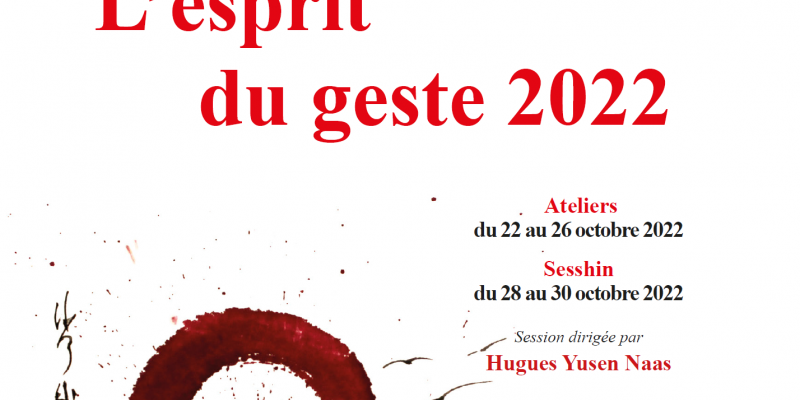
Spirit of Gesture" Retreat - Fall 2022 - meditation and workshops
With zen master Hugues Yusen Naas
Program
WORKSHOPS
(Sumi-e, Kesa sewing, Workshop for children, The 34 Sounds of Zen, Yoga, Shadow Theatre, Raku - Introduction to ceramics, Permaculture, Jin Shin Jyutsu) - from October 22 to 26, 2022
Arrival Workshops: Friday 21 October in the afternoon. Dinner at 8:30.
7h00 Zazen
9h30-12h00 Workshops
12h30 meal
14h30-17h Workshops
18h Zazen
19h30 meal
Departure: For those who come to the workshops only, on Thursday 27 October after breakfast.
For those who stay, rest day October 27.
SESSHIN ( zen meditation's retreat ) - from 28 to 30 october 2022
Arrival of sesshin on Thursday 27 October in the afternoon, dinner at 20.30.
Sesshin ends on Sunday 30 October after lunch.
Online registration for the workshops
Online registration for the sesshin
Spirit of the gesture
The spirit of the gesture, being awake, staying awake, being vigilant.
This vigilance (from the Latin vigilare, vigilo: "I am awake") is the spirit of zazen and its continuation in daily life: to let thoughts pass, to be totally present in action at every moment.
The spirit of the gesture is also to stop discriminating, attributing importance or neglecting this or that. Understand that there are no small or big things, but that everything is important in our lives, that everything deserves our attention, here and now.
The workshops that will be proposed to you will encourage you to deepen the spirit of the gesture in an educational and playful way. Through practice, they will allow everyone to realize that this spirit is not the fruit of an activity or the learning of a technique, but that beyond the techniques, beyond the aspect, the form and the non-form, the spirit of the gesture can be manifested in all the circumstances of our life - noble or trivial, vast or minute. For the spirit of the gesture is the spirit itself.
As it is written in the Dhammapada, the Says of the Buddha: "Vigilance is the eternal way; Neglect is the mortal way. He who is vigilant does not die; But he who is not present, not conscious, That one is almost already dead. »
Practice of the Buddha's way
Zazen is sitting meditation without object, as practiced by the Buddha and transmitted through time by an unbroken line of masters. It is recollection in the silence and nudity of the present moment. It is a return to what is "before" that thought unfolds to try to grasp what, simply, is.
This is done effortlessly when attention simply returns to what is presence. The time of meditation escapes time itself because it is a return to the still source of our existence. When the original source is seen, each breath, each action, each movement spontaneously becomes the luminous expression of life itself, and the duality between subject and object disappears.
During the five days of the workshops, zazen will be practiced in the morning and late afternoon.
Hugues Yusen Naas
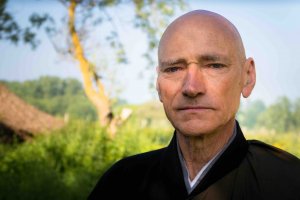 Hugues Yusen Naas was born in Strasbourg in 1952. He has practiced zazen since 1975 and was ordained a monk in 1977 by Master Deshimaru, whom he followed until his death. He taught Dharma for twenty-five years at the Zen Dojo in Strasbourg. In 2009 he received the transmission of the Dharma from Master Dôkô Raphaël Triet. From the summer of 2002 until the summer of 2016, he was in charge of the Gendronnière Zen temple, ensuring the follow-up of maintenance, improvement work, the organization of the daily life of the residents, as well as the reception of sesshins and groups. He also taught in the dojo. He then left Gendronnière to found the Centre zen du Perche - Daishugyoji, which he now manages by chairing the Daishugyo Zen association. He also directs sesshins (Zen retreats) in France and abroad.
Hugues Yusen Naas was born in Strasbourg in 1952. He has practiced zazen since 1975 and was ordained a monk in 1977 by Master Deshimaru, whom he followed until his death. He taught Dharma for twenty-five years at the Zen Dojo in Strasbourg. In 2009 he received the transmission of the Dharma from Master Dôkô Raphaël Triet. From the summer of 2002 until the summer of 2016, he was in charge of the Gendronnière Zen temple, ensuring the follow-up of maintenance, improvement work, the organization of the daily life of the residents, as well as the reception of sesshins and groups. He also taught in the dojo. He then left Gendronnière to found the Centre zen du Perche - Daishugyoji, which he now manages by chairing the Daishugyo Zen association. He also directs sesshins (Zen retreats) in France and abroad.
Worshops
Jin Shin Jyutsu
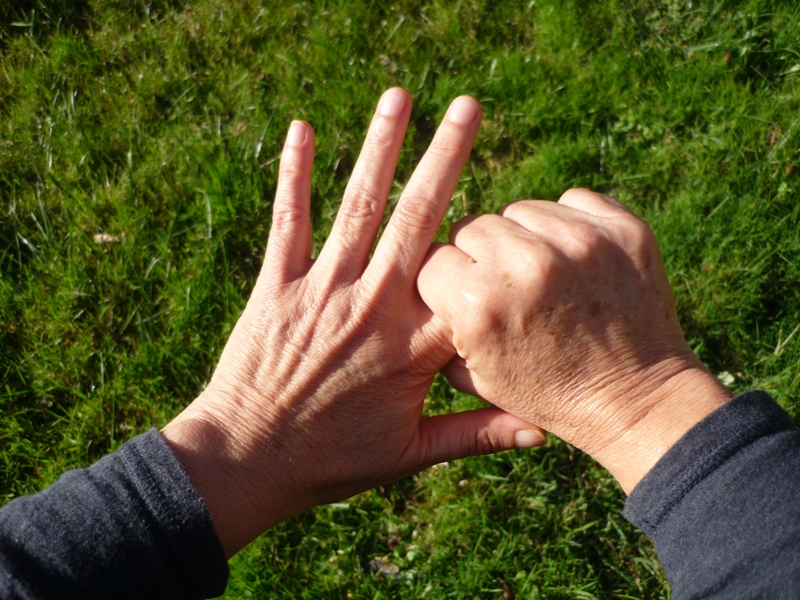
Jin Shin Jyutsu, literally "The Art of the Creator through Man of Knowledge and Compassion", is an ancient Japanese energy art based on an in-depth knowledge of vital energy circuits and how to harmonize them. It is a soft art of touch on the other or on oneself which requires neither massage nor manipulation and which acts powerfully at all levels by simple contact of the fingers over the clothes. Used regularly, it promotes self-knowledge and actively contributes to physical, mental, emotional and spiritual balance.
This workshop is intended for all those who want to be well and offers the opportunity to experience this practice directly on oneself and its concrete effects of transformation. During these five days, everyone will be guided to gradually learn to lay hands on themselves in the appropriate places and thus discover and repeat the basic sequences so that they can be integrated into the daily life of whoever wishes at the end of the course. These five days will also allow us to discover the energetic foundations of this practice but especially the Spirit behind the gestures.
The teacher: Marie Ravet, passionate about the human being and consciousness, practices zazen since 1995. She has over thirty years of professional experience in the field of listening and touch and has dedicated herself exclusively to the practice of Jin Shin Jyutsu since 2010. Enabled by Jin Shin Jyutsu International Inc. she teaches "self-help" and receives individual sessions in Génissac (33) and Paris (15°).
Yoga
 Zazen is the art of immobility, but often the practitioner is carried away by his internal movements and sinks into torpor or gets lost in mental agitation. Yoga is the art of movement, but it leads many practitioners to a superficial attachment to body health and well-being. Explore the mind-body movements at the heart of motionless sitting; find the path that has no form - Shakti dancing under the eye of Shiva in India, Huineng's poem in response to the fifth patriarch in China... we will explore this path through asanas and pranayama.
Zazen is the art of immobility, but often the practitioner is carried away by his internal movements and sinks into torpor or gets lost in mental agitation. Yoga is the art of movement, but it leads many practitioners to a superficial attachment to body health and well-being. Explore the mind-body movements at the heart of motionless sitting; find the path that has no form - Shakti dancing under the eye of Shiva in India, Huineng's poem in response to the fifth patriarch in China... we will explore this path through asanas and pranayama.
Teacher: Yorgos Fokianos began practicing hatha yoga in 1997 during his studies in theatre and dance. Ten years later, he learned in New York with Cyndi Lee how to teach and has since worked as a trainer in Germany and Greece. He studied deeply the ashtanga vinyasa system, to move with the consciousness of breathing, and also the anusara system, to work with precision and compassion. His discovery of zazen in 2011 obviously changed his life and also his views on yoga, in a non-dualistic and even more precise direction.
Raku - Introduction's course ceramic
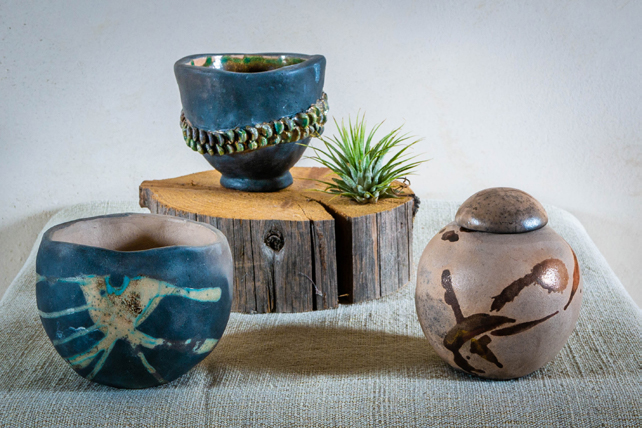 The time of a bowl, trace the genesis of the earth that provides us with raw materials to leave our mark and mark history. An ephemeral grain of sand in a world in motion, this granite became sandstone over millions of years and then became a bowl, cup, in a few days according to creativity and human needs.
The time of a bowl, trace the genesis of the earth that provides us with raw materials to leave our mark and mark history. An ephemeral grain of sand in a world in motion, this granite became sandstone over millions of years and then became a bowl, cup, in a few days according to creativity and human needs.
Let's take a "rakurci" for one session, and come experiment the various types of shaping (modelling, plate, tower, stamping), discover the world of enamels and perform a raku firing, while enjoying an introduction to the phenomena that make up the world of the earthworker.
The teacher : After a passage at the Gendronnière, Cécile Bardenet went to learn ceramics. As she meets people and travels, she continues to go a little further in this link with the earth and man. Now installed as a ceramist in the east of France, she works stoneware to shape utilitarian objects and develop the work of high temperature enamel (1 300 °C) while remaining linked to the world of Zen.
Sumi-e
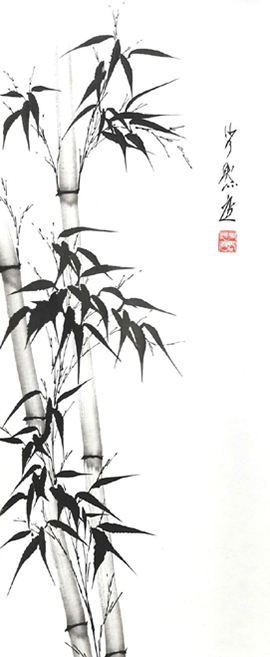
Sumi-e originated in China and was introduced into Japan by Zen monks more than five centuries ago.
The Japanese term “sumi” means “black ink” and “e” means “painting”. It indicates one of the art forms in which subjects are painted with black ink in all possible gradations ranging from pure black to the lightest shades achieved by diluting the ink with water. In order to paint, we only need a brush, a black ink tablet, a stone (suzuri) and a sheet of rice paper.
This way of painting is complete, it involves the whole body. It is not easy at all and working with an expert teacher is necessary, as well as getting used to repeating subjects, or parts of them, innumerable times. The spirit becomes more and more refined and sensitive through constant repetition.
Everyone whatever their level, interested or curious to experiment this "old" oriental approach, will find a new and spontaneous way of artistic expression.
Thanks to a correct and relaxed posture which influences a deeper breathing, the coordination and the fluidity of the gestures improves. Sumi-e is not the learning of a simple painting method. It is the direct contact with our essential being, Buddha nature, beyond "doing" or "not doing". Life created by the touch of the brush strengthens Life itself.
Participation to the workshop (brushes, ink, paper and rice paper) : 25 €
The teacher : Beppe Mokuza Signoritti, Zen monk, disciple of Roland Yuno Rech, has been practicing sumi-e for about twenty years. He exhibits and gives lectures and practical demonstrations throughout Europe. www.sumi-e.co.uk
Children's workshop
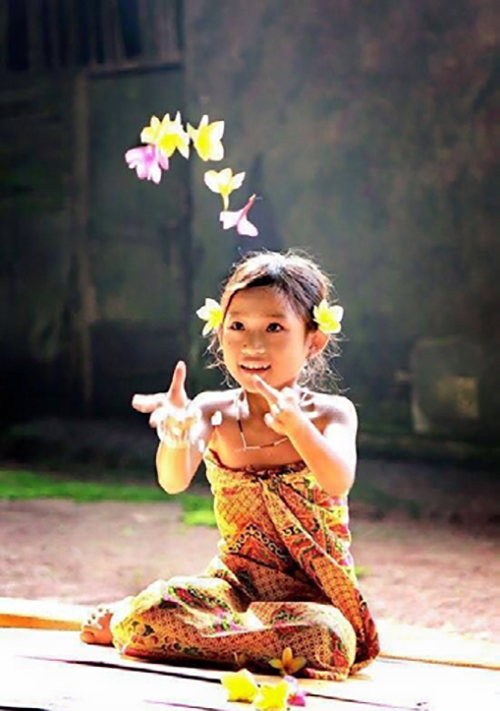
During this internship, we will explore the world of Zen Buddhism through poetry and tales, mythical legends that date back to the time of the ancient Buddhas and that have been carefully passed down through the generations. These stories illustrate aspects of Zen through humour and the unexpected, and are therefore particularly accessible to children... We invite them to bring their poems!
The teacher: Magali Naas has been a theatre teacher since 2005. The Steiner school and training at the conservatory in the United States have enabled her to enrich her artistic palette. Today, with her partner Mark, she has a small theatre and music school near the Centre zen du Perche, run by Hugues Naas.
The 34 Sounds of Zen
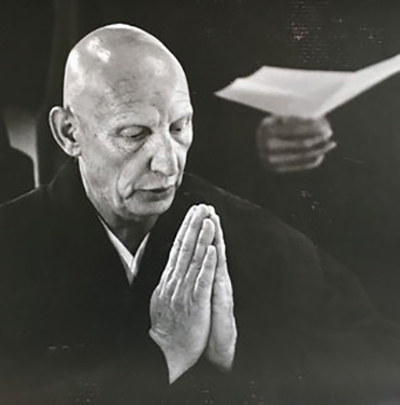
Over time, the Buddha's path has developed through various forms. In the Soto Zen tradition, these are all placed at the service of spiritual realization. Thus the life of the dojos, temples and monasteries is notably punctuated by codified sounds which are each time the occasion of a concrete experience, as much for the person who produces them as for the person who hears them. In this workshop, you can learn or perfect the practice of these sounds: wood, metal, drum, mokugyo, various gongs and bells, without forgetting the singing of sutras. You will put the teachings into practice by coaching the Spirit of Gesture session throughout the day. What then to make benefit your group of zazen according to the place and the demand!
The teacher : Michel Jigen Fabra, Zen monk, disciple of master Roland Yuno Rech, created the Carpentras dojo in 2002 and directed it for seven years, before going to the Gendronnière Zen temple, where he held the functions of shuso and ino (responsible for sounds) for five years. In August 2014, he received the transmission (shiho) from Master Yuno Rech. He is currently responsible for teaching at the Poitiers dojo.
Kesa sawing's class
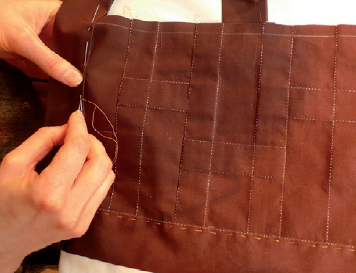
Sewing the kesa is the Buddha's way, like zazen.
Concentrated, moment after moment, on each point by observing our work without judgment, in respect of the tradition transmitted by Master Deshimaru, we carry out point after point, with patience and determination, the assembly of the parts of the kesa with inner joy and serenity.
All together, in the silence of our practice, unconsciously, naturally, automatically, we realize our unity with all things.
The teacher: Catherine Cordier was ordained a Zen nun by Master Deshimaru. She has been practicing and teaching kesa sewing for many years during the sesshins and workshops of the Gendronnière, as well as in the dojos.
Ikebana
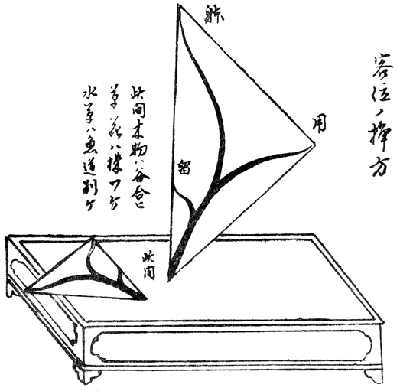 A traditional style of ikebana called kakubana can be a support for meditation, and thus the basis for a spiritual path. The kakubana style dates back to the end of the 17th century. It was codified under this name by Ippo Mishôsai (1761-1824), founder of the Mishô school. This style is typical of the school. The kakubana is based on a Chinese cosmogonic principle represented by a diagram. The latter also forms the basis of its aesthetics. To compose a bouquet, one must mentally imagine this diagram just above the vase.
A traditional style of ikebana called kakubana can be a support for meditation, and thus the basis for a spiritual path. The kakubana style dates back to the end of the 17th century. It was codified under this name by Ippo Mishôsai (1761-1824), founder of the Mishô school. This style is typical of the school. The kakubana is based on a Chinese cosmogonic principle represented by a diagram. The latter also forms the basis of its aesthetics. To compose a bouquet, one must mentally imagine this diagram just above the vase.
During the five days of the course, we will develop this principle to learn how to apply it to your work and introduce you to the way of flowers. We will also discuss modern ikebana. Each participant should bring a pair of secateurs and at least one flower pick. You will be asked to pay for the flowers, but you can take some of your bouquets home with you at the end of the workshop.
Nobuko Matsumiya is an ikebana master, tea master, koto player, singer, founder and leader of a Japanese folk group, the Sakura Ensemble. Originally from Kyoto, the capital of traditional arts, she taught ikebana and tea privately before her arrival in France in 1987. She is a member of the Mishô School of ikebana (Mishô-Ryû), one of the main schools in Japan, and her master is Seiho Tachibana. She has been practising the way of flowers since 1970 and graduated as a teacher in 1973. Her artist name is Nobuho Shinsô-sai, Shinsô meaning "synthesis of truth". In 1994, she was ordained as a bodhisattva under the name of Reigi, meaning "spiritual attitude".
Samu Workshop
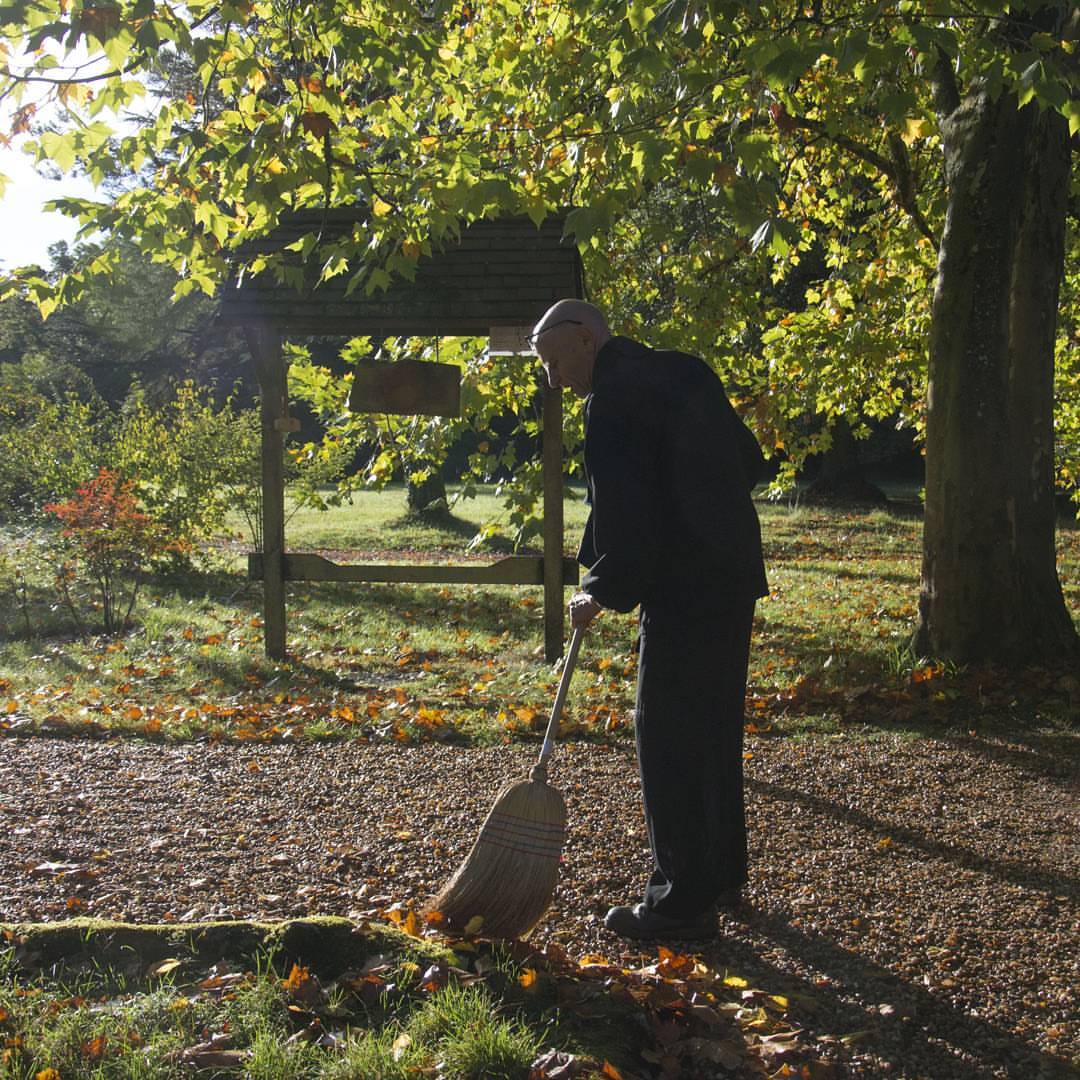 Samu, the generous action essential to the life of the community and the good behaviour of the temple for the benefit of all.
Samu, the generous action essential to the life of the community and the good behaviour of the temple for the benefit of all.
For those who wish to donate their energy to the Sangha and the temple, it is the possibility to participate in the organization of the session (service, cleaning...) according to needs.
Registration and Prices
WORKSHOP Room 4-5 375 euros / Room 2 persons 450 euros
CHILDREN 150 euros par enfant
WORKSHOP " the 34 sounds of zen " Room 4-5 292 euros / Room 2 persons 350 euros
ATELIER SAMU Room 4-5 75 euros / Room 2 persons 90 euros
SESSHIN Room 4-5 161 euros / Romm 2 persons 193 euros
IMPORTANT
• Parental authorisation is necessary for minors.
• Membership of the association AZI 2022 is obligatory : 45 euros (35 euros those with limited ressources).
• Animals not allowed.
REGISTRATION
• Online : HERE
• Information : 02 54 44 04 86 ou lagendronniere@zen-azi.org
Temple zen de la Gendronnière
41120 Valaire (près de Blois)
PRACTICAL INFORMATION
See HERE
